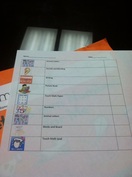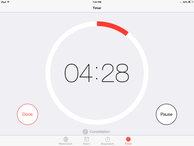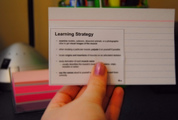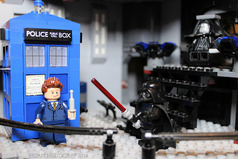 Over the years I have clocked thousands of hours working one-on-one with kids on the autism spectrum, addressing academic and cognitive challenges. During this time, I have learned many things. While the foremost thing I have learned is that every individual with an autism spectrum disorder, is just that, an individual, I have also learned a few "tools of the trade" that I have found to work with a good percentage of my clients with autism.  1) Have an Agenda or Schedule- Kids on the autism spectrum often have trouble tracking time passively, a minute may feel like an hour, especially when doing something challenging. Making a list of tasks to complete and checking them off is a simple way to do this for a higher functioning individual, while a younger, or lower functioning kid would benefit from a consistent visual schedule that can be adorned with smiley faces or stars. It is amazing how effective this is in helping a kid to complete tasks. One sideline tip...some kids that need more control, let them pick the order of completion, but you pick the tasks. 3) Allow kids Time to Process- Kids on the spectrum often have challenges processing spoken language, and may, in general, have slow processing speed. It is not uncommon for a kid to respond to a question up to two minutes after the question was asked. Continuing to prompt for the question during the wait time, for some kids, actually makes the processing more difficult. It is important, however, to be sure that distraction hasn't taken hold. One way to help this is, if your child can read, by writing the question down.  2) Use a Visual Timer- A timer can be helpful if a kid needs to focus for a specific amount of time with a specific intensity. Individuals often respond to timers in two ways, with anxiety, or by buckling down. A visual timer has little or no ring tone and instead shows the time completed using a visual cue, such as a ring around the timer filing in with a red stripe. The ipad clock app has a very mild ring and a visual element. Timers are also helpful to bring a kid back to work after breaks.  7) When it Comes to Handwritten Work, Less is More- Busy worksheets with multiple math problems can be overwhelming, even if your child has mastered the skill. Write out the same problems on a marker board, cut the worksheet into strips, or cover up some of the problems so only some are visible. Also, find different ways for them to express their knowledge, such as matching games with note cards or fun iPad apps.  4) Integrate The Student's Interests- You may be completely sick of hearing about the Transformers or microwaves, or weather patterns, whatever the intense interest is for your child on the spectrum. That said, the best way for any of us to be productive is for us to be productive in an area that is interesting. Use The Transformers to teach word problems or vocabulary words like "metamorphosis", or use a microwave to teach prepositions...put the popcorn in, on, under, and by the microwave. 6) Plan Breaks- Some kids on the spectrum can work for extended periods of time if they have a couple of 5 minute breaks to stretch their legs and play. Be sure that these breaks have finite time limits and that it is clear that once they are done, it is time to return. Putting the breaks on a visual schedule can be very helpful. 5) Teach In Short Snippets- More is not always best. It is better to schedule an hour with 12 different short tasks than one long task. This will keep your student from shutting down. More can be taught in 5 minutes about compound sentences than in 30 minutes of doing a long worksheet on the skill. 8) Don't Assume- Especially when working on reading comprehension, don't assume that just because something is an "old hat" concept to you, that it is to your child. It is amazing how often the concepts we take for granted, such as the idea that it snows in winter, not in summer, is lost. Many times, the best thing that you can do to help a child understand what they read is to help them understand the world. It is difficult to comprehend something you read if you don't have a certain amount of background knowledge on the subject.  9) Use Visual Media- Show pictures of what you are reading before you read about it, watch videos that mirror the concept you are teaching. Some people think that it is cheating to teach a concept before someone reads about it, but in this case, you are priming the your child for comprehension and success. 10) Be Sensory-Friendly- If a kid needs a sensory seat cushion, a weighted blanket, or to stand up in order to complete the tasks, allow for these things. They will help with focus and let you get more out of study time. I would love to talk with you further about the work that I do with kids on the autism spectrum. I love to find creative educational solutions for families! Feel free to contact me!
0 Comments
If you are looking for an Amazing science program that can be adapted to multiple age-levels and abilities, check out Real Science 4 Kids! This curriculum has a real hands-on experiment with every lesson, teaches high level science concepts even to the youngest participant, and uses the scientific method as its foundation!
|
PurposeTo provide useful information to families regarding educational strategies, interventions, and tools. ArchivesCategories
All
|

 RSS Feed
RSS Feed